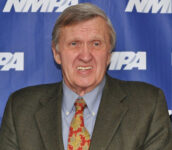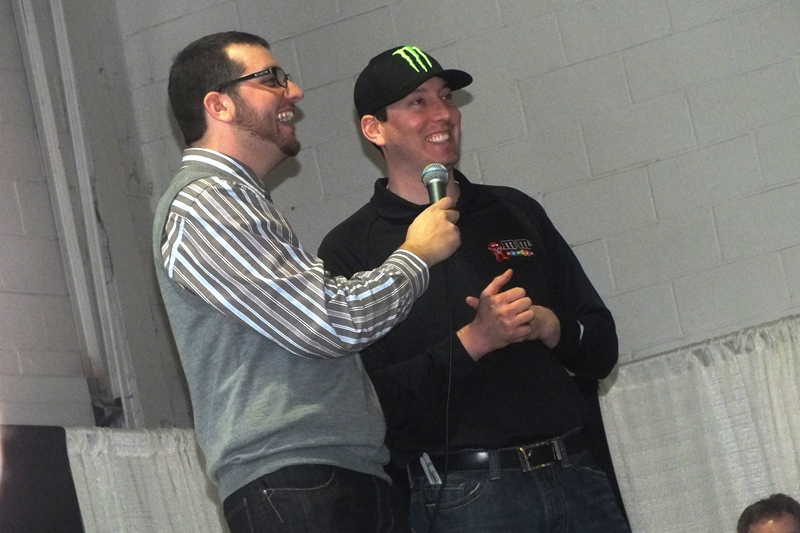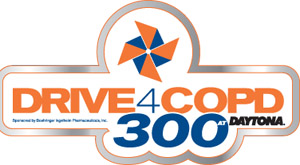
As NASCAR readies to kick off the 2013 season with the Great American Race at Daytona, one common man, Ken Squier, will be ready to once again have an uncommon influence on the sport.
Squier, a Vermont native, has had a lengthy history of covering the sport that he has grown to love and influence. In fact, he started his broadcasting career at the tender age of 14 years.
“I hitchhiked to the track because I didn’t want my parents to know,” Squier said of his first announcing gig. “I think I got $5 for it.”
“They had taken a bull dozer around the field a couple of times and called it a race track,” Squier continued. “It was the north against the south at that time in Vermont and it was a war.”
“The public address system was on a logging truck,” Squier said. “It got so bad that me and another kid hid under the truck until the fights were under control.”
As with many in the sport, Squier came by his love of racing naturally, tagging along with his father who was a harness racing announcer. And thanks to those travels, he got his first exposure to stock car racing.
“My dad was a harness race announcer so I knew I had to be a part of racing somehow, someway,” Squier said. “We used to go to country fairs and one afternoon lasted about five years.”
“It was awful,” Squier continued. “However, on the weekend, you could blast through those awful days because they had the Hell Drivers and the open wheel, open cockpit cars.”
“This was no children’s game,” Squier said. “It was the real deal.”
“We would see on a Saturday or Sunday American Automobile Association races,” Squier continued. “I actually saw the original Joie Chitwood and all the others.”
“My hero when I was a kid was Ted Horn from California.”
From then on, Squier was hooked on this intriguing sport of automobile racing, so much so that he was involved with the founding of the Motor Racing Network, where we served as a commentator from 1969 to 1978.
“The first office for Motor Racing Network was a Pepsi cooler with a glass top folded back and forth out in the hall,” Squier said. “They gave us a phone and said get your ass busy and find some radio stations to carry this race.”
He then took on a role with CBS Sports, again telling the stories of the racers he so admired, as well as covering other sports, including boxing and even frog jumping and hollering contests. In fact, Squier was part of the debut of the NASCAR broadcast for the 1979 Daytona 500 and would be part of many Great American races from that time forward.
“I wore my CBS necktie every Daytona 500,” Squier said. “I paid $5 and selected it because whatever you spilled on it, no one could see.”
And of course, Squier would be part of that one special CBS Daytona 500 broadcast, capturing the infamous fight between the Allison brothers and Cale Yarborough, which was not only seen around the world but which catapulted the sport of stock car racing to the level that it is today.
“The show was over and the Goodyear blimp was headed back to the airport,” Squier said of that incredible Daytona 500 finish. “We were just fussing around and the producer said, “Take a look at this.”
“Capturing that brawl was just one of those moments,” Squier continued. “Everything fell into place that day and all fit together.”
Squier was also part of another historic moment, bringing the innovation of an in-car camera to the sport of stock car racing.
“I was in Australia and the people providing the in-car equipment invited me to see Bathurst which was their Indy 500 at the time,” Squier said. “I was in the truck and sure enough the thing goes on and the course was like a Christmas tree, up one side and down the other.”
“It was just remarkable to see the cameras focused on the drivers,” Squier continued. “When they came down the mountain, there was a straightaway and the race is on and the racer is providing commentary right from the track.”
“I said to myself, I just think I found what we need to do in the Daytona 500.”
Cale Yarborough carried that first in car camera in a Daytona 500, sharing his insights right from the cockpit of his race car. And he went on to win the race as well.
Patty Wheeler, Humpy Wheeler’s daughter, recognized other accomplishments of her good friend and mentor Ken Squier.
“There were other innovations like the Hollywood Hotel on Fox, which was conceived by Squier in the early 1980s as the STP Pit Communication Center,” Wheeler noted. “He started the first ever television production company and launched the first ever weekly motorsports show called Motor Week Illustrated.”
“You remember that 5:35 on Friday afternoons was must-see TV to find out about racing,” Wheeler continued. “And it even led into live wrestling.”
“One of Squier’s great legacies was Motorsports University,” Wheeler said. “When you look at the people on the air, most got their first shot or their big break from Squier.”
“We all owe him a great deal of gratitude for that.”
“What Squier did for motorsports was what Howard Cosell did for boxing,” Wheeler said. “He introduced a broad American public to the sport he loved and showcased it in a way that made everyone else love it with him.”
In addition to his broadcasting prowess, what intrigued Squier most were these racers, these gutsy risk takers, who gave their all both on and off the track.
“This was not a children’s game played by adults,” Squier said. “These were men that were so committed and believed so wholly in what they did that they were willing to take the risk.”
“If one fell, the greatest tribute was to be there the next week to race in their honor,” Squier continued. “It was the kind of sport where those people who took those chances understood that.”
“You could trust them,” Squier said of the NASCAR racers. “They could be wild, but when the chips were down you didn’t have to worry that your children were going to take on a hero that was stuffing something up their nose.”
“That didn’t play in NASCAR,” Squier continued. “It was a different world and still is today.”
“These were common people doing uncommon deeds,” Squier said. “It was Bud Moore in World War II over in Europe.”
“So much of what we know of racing and love came from those incredible people who fought for this nation,” Squier continued. “They were common men that did incredible deeds.”
“And racing is full of those people and still is today,” Squier said. “So, that’s what has always brought me back to this.”
“I can’t stop it because I like it so much and I like the people so much.”
“It is that good.”
For his years of passion for the sport, Squier was inducted recently into the National Motorsports Press Association Hall of Fame and also was recognized with the unveiling of the Squier-Hall Award for Media Excellence, with his good friend Barney Hall, at recent ceremonies at NASCAR’s Hall of Fame.
So, this weekend, as fans across the nation sit down to watch the Great American race yet again, with the new gyrocam and other technological broadcasting advances, all should remember that common men doing uncommon deeds, both on and off the track, have grown the sport to what it is today.
And Ken Squier was certainly one of those common men with an uncommon influence on the sport of NASCAR racing.











Fantastic piece on a fascinating motorsports legend!